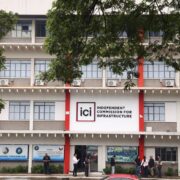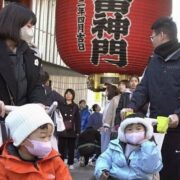Oiling drags, boosting drivers

The discouraging second quarter (Q2) slowdown of the Philippine economy was arrested in Q3 with a GDP growth upturn that surprised many, and it was mainly government spending that did it. In the same way that depressed government spending led to the Q2 GDP growth of only 4.3 percent (vs. the previous quarter’s 6.4 percent and 7.5 percent in the same quarter the year before), it was also a marked hike in the same that made Q3 growth recover to 5.9 percent. That Q3 government spending boost managed to pull year-to-date growth to 5.5 percent, but unfortunately still well short of the government’s 6-7 percent growth target for the year. We need to pull off more than 7 percent growth in the last stretch to keep within target, and unless government can keep up its brisk spending pace, this looks highly unlikely. The bad news is that there’s hardly any ammunition left for that; the word is that government had already advanced some of the budgeted Q4 spending precisely to propel Q3 growth.
There isn’t much we can realistically expect from the other spenders in the economy—that is, ordinary people (household consumption spending), firms (investment spending), and foreigners (exports)—that could speed up the rest of demand for goods and services to stimulate the production growth we need to stay in target. Households have consistently and continuously been pulling back the reins on spending after the height of “revenge spending” that followed the pandemic lockdowns, which peaked at 10 percent growth at the start of last year. Now it’s only half of that. And because this accounts for 73 percent of total spending in the economy, the fact that it has grown more slowly (5 percent) than the entire economy has (5.9 percent) means that it was indeed a drag on overall growth.
This was even more so for overall investment spending (“gross capital formation” in the GDP data), which not only slowed down but actually fell (-1.6 percent). Investment in durable equipment grew a mere 1.7 percent; factories and firms don’t appear to be gearing up for much-increased capacity. Investment in intellectual property products also grew a mere 2 percent. These are consistent with the results of the quarterly Business Expectations Survey of the Bangko Sentral ng Pilipinas, which showed a decline in business confidence in Q3. In agriculture, investments in breeding stock and orchard development nearly stood still at 0.6 percent growth. The negative overall number implies that inventory investment must have been negative. That is, inventories were drawn down in Q3 to meet demand that was mainly boosted by government purchases.
Foreigners’ spending on our products (i.e., our goods exports) also fell (-2.6 percent), but this was luckily offset by an impressive 11.7 percent growth in our exports of services, which managed to round up overall export growth to a positive 2.6 percent. The latter is prominently coming from business process outsourcing, which remains an important pillar in the economy even with the looming threat of artificial intelligence (AI) on its future prospects. Meanwhile, imports have actually declined, mainly from a steep drop in imports of goods (-8.1 percent). What should worry us about this is that the bulk of our imports are actually inputs to production, including fuel, capital equipment, raw materials, and intermediate goods. A decline in imports is thus a foreboding of lower production ahead, further making it hard to anticipate improvement in the economy’s growth in the final quarter and into the next year.
On the production side, the drivers of our recent growth would be the industries that grew faster than the overall economy did. Eyeballing the data, the services sector grew overall by 6.8 percent, which means the sector was the prominent economic driver, especially hotels and restaurants (20 percent), transport and storage (11.6 percent), financial services (9.5 percent), health services (7.1 percent) and professional and business services (6.6 percent). The last item includes BPO, which underscores the need for us to take appropriate measures to redirect the industry to make it less vulnerable to AI disruption, and possibly even ride on it. In the industry sector, construction—again propelled mainly by unusual government spending thereon—and utilities (electricity, gas, and water) have been the drivers, but manufacturing (1.7 percent) and mining and quarrying (4.5 percent) have been drags. Our problematic agriculture has been a definite drag with only 0.9 percent growth.
All told, prospects don’t look encouraging and we need to be much more focused on oiling the drags and boosting the drivers as we move on to a challenging new year. And more importantly, we must make sure we don’t leave the poor behind as we do.
—————-cielito.habito@gmail.com
















